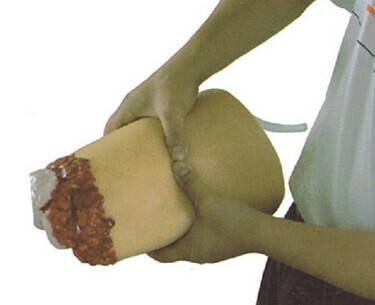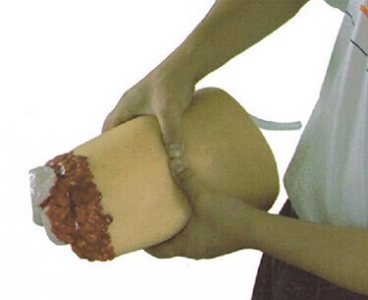In the medical field, hemostasis of lower limb trauma and amputated limbs has always been a key part of first aid treatment. In order to better master the hemostasis technology and improve the success rate of treatment, the application of the hemostasis model of lower limb trauma and amputated limbs is particularly important. This article will focus on discussing the role, advantages and application prospects of the lower limb traumatic amputated hemostasis model in medical practice.

The lower limb traumatic amputated limb hemostasis model is a teaching tool that simulates lower limb trauma and amputated limbs. By simulating real injuries and bleeding conditions, medical staff can conduct hemostasis operation training in a safe environment. This model not only helps medical staff become familiar with and master hemostasis techniques, but also improves their response capabilities and psychological quality, ensuring that they can quickly and accurately handle lower limb trauma and amputated limbs to stop bleeding in emergencies.
The advantages of the lower limb traumatic amputated hemostasis model are mainly reflected in the following aspects: First, the model has a high degree of simulation and can truly simulate the injury and bleeding conditions of the lower limb traumatic amputated limb, so that medical staff can feel the real situation during training. Heal the environment. Secondly, the model is reusable, and medical staff can conduct multiple trainings in different time periods to deepen their understanding and mastery of hemostasis technology. In addition, the model also has the advantages of simple operation and portability, making it convenient for medical staff to train in various situations.
In terms of application prospects, the lower limb traumatic amputated hemostasis model has broad room for development. With the continuous advancement of medical technology and the increasingly perfect first aid system, the requirements for first aid skills of medical staff are becoming higher and higher. As an effective training tool, the lower limb traumatic amputated hemostasis model will play an increasingly important role in future medical education. At the same time, with the continuous innovation and improvement of model technology, the lower limb traumatic amputated hemostasis model will better meet the learning needs of medical staff and improve the training effect.
In short, the lower limb traumatic amputated hemostasis model plays an important role and advantage in medical practice, and can effectively improve the hemostasis skills and response capabilities of medical staff. With the continuous development of medical technology and the improvement of first aid systems, the application prospects of the lower limb traumatic amputated hemostasis model will become even broader. In the future, we will continue to research and improve this model to adapt to the needs of different injuries and treatment environments, and provide more comprehensive and efficient training support for medical staff. At the same time, we also expect more medical institutions and educational institutions to introduce this model to jointly promote the development of medical emergency services and protect the safety of patients.

